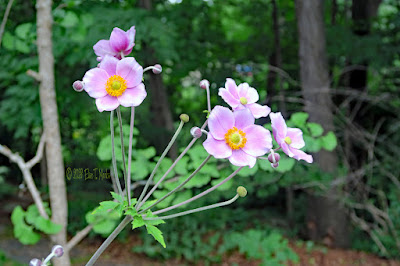Anemone Flowers, Also known as the Windflower, Grecian windflower, Japanese Anemone. In general Anemone do best in woodland conditions in light, cool, well-draining soil rich in organic matter.
Bee On Anemone
Bee Pollinating Anemone
MY PHOTOGRAPHS ARE AVAILABLE FOR PURCHASE THANKS FOR YOUR VISITS, FAVS AND COMMENTS. AS ALWAYS, APPRECIATED VERY MUCH!© ALL RIGHTS RESERVED BY ELISE T. MARKS. PLEASE DO NOT USE THIS IMAGE ON WEBSITES, BLOGS OR ANY OTHER MEDIA WITHOUT MY EXPLICIT WRITTEN PERMISSION.





